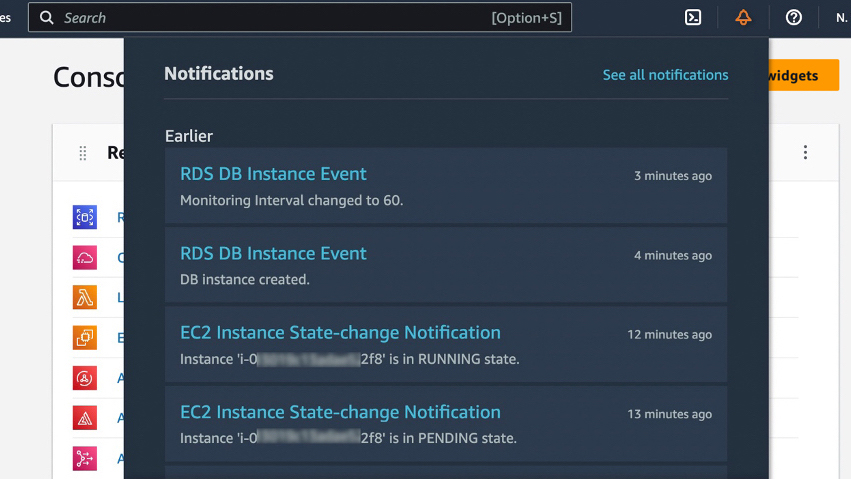Managing your Amazon Web Services (AWS) accounts has just gotten a lot easier with the launch of a new notification center inside the dashboard.
The so-called AWS User Notifications is designed to centralize all the notifications admins would typically receive from its cloud-based services to make it easier to manage accounts, regions, and services.
The announcement covers the amalgamation of more than 100 AWS services – like Amazon Simple Storage Service (Amazon S3) objects events, Amazon Elastic Compute Cloud (Amazon EC2) instance state changes, AWS Health Dashboard events, Amazon CloudWatch alarms, or AWS Support case updates – as the creation of a “consistent, human-friendly format.”
AWS User Notifications
As well as their new home, users can choose to check up on changes and other news using the bell icon in the AWS Management Console.
From launch, Amazon has taken steps to make managing notifications less tiresome, with filtering to rule out certain services. The summaries are designed to be quickly readable, but each notification will have its own deep link to the relevant console resource pages to help admins inspect potential issues more smoothly.
Promising to be a powerful and insightful tool, users will first have to create custom alerts by defining which events should generate notifications and implementing other rules such as frequency.
AWS users will also be able to configure notifications in chat clients such as Slack to align with their existing technology infrastructure.
AWS User Notifications are available to use in the following regions:
US East (Ohio), US East (N. Virginia), US West (N. California), US West (Oregon), Asia Pacific (Mumbai), Asia Pacific (Osaka), Asia Pacific (Seoul), Asia Pacific (Singapore), Asia Pacific (Sydney), Asia Pacific (Tokyo), Canada (Central), Europe (Frankfurt), Europe (Ireland), Europe (London), Europe (Paris), Europe (Stockholm), and South America (São Paulo).
Other regions added after March 2019 will need to have them enabled in their accounts. Full details of the availability and features can be found in the company’s announcement (opens in new tab).





